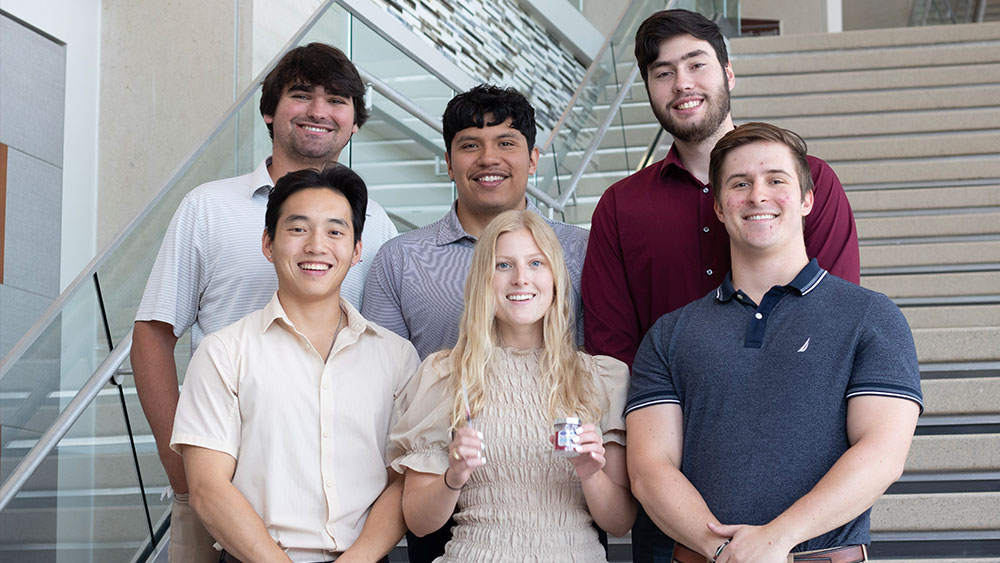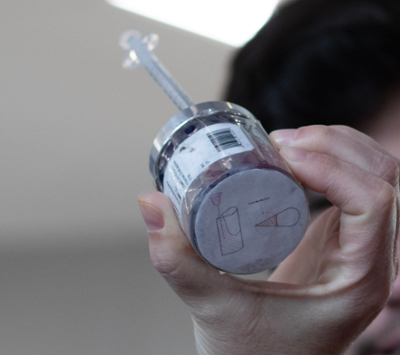
Similar to the vastness of space, the risks related to entering a zero gravity environment seem to have no end in sight. Recognizing the limitations of individual institutions in addressing every single hazard, six former students of the Department of Biomedical Engineering at Texas A&M University committed their senior capstone project to develop a countermeasure for what NASA has recognized as a risk that needs to be mitigated: administering injectable medication in space.
Two major issues arise when injecting liquid medication in zero gravity. The first problem is that surface tension becomes the dominant force, causing liquid droplets to form multiple bubble-like, free-floating pockets of liquid. The second – and arguably more dangerous – challenge is that air is no longer lighter than liquid, so air bubbles encapsulated within are not buoyantly floating to the top, posing the risk of an air embolism when injecting medicine.
“Imagine your crew member is having a heart attack, and they need three milliliters of epinephrine,” team member Evan Pettit said. “It’s hard to perform emergency life-saving procedures like CPR, so you must rely on well-designed medication administration devices to draw a uniform volume and not waste time getting rid of dangerous air bubbles. Injecting on time may mean the difference between your crew member’s life or death.”
In just a year, team Quickdraw Vial: Novel Liquid Medication Storage in Space developed a solution using an unexpected inspiration — NASA’s airfoil-shaped coffee cup.
The unique shape of the cup activates capillary action, which helps keep the liquid in a uniform shape and sticking to the surface of the container. The students applied this concept to a multi-chambered device with the idea that the medication in each compartment maintains a single volume and mitigates air bubble formation, ultimately creating a safer and quicker method of injecting necessary medications.

“Capillary action, in this case, uses adhesive forces to encourage the liquid to stick to the container, while cohesive forces maintain the liquid in a single volume,” team member Simon Herz said. “Our chambers are designed of around three to five milliliters so that when you draw, there is excess medication to increase the probability of only getting the liquid.”
Aside from the geometry of the chambers, another factor considered by the team while creating the Quickdraw Vial is the material properties of the container. Looking for a material that is both transparent and protects the medication from radiative degradation, their research led them to polystyrene, a resin used in a multitude of everyday items such as egg cartons, food packaging and CD cases.
“Humans are very sight-reliant and to take away that sense would be a mistake,” Pettit said. “We decided on polystyrene because of its optically clear property and because of a phenomenon known as hydrogen shielding, where the polystyrene will absorb some of this radiation instead of allowing it to penetrate directly through and degrade the medication.”
The team credits their success with the Quickdraw Vial to a divide-and-conquer approach, capitalizing on each other’s interests and strengths to delegate tasks. As the group assesses their next steps, they may be looking to take the Quickdraw Vial outside of the classroom.
“This is pretty much my first stepping stone into a project that could be useful in an organization or an important mission,” Herz said. “It feels good because we're in contact with some NASA surgeons, and they're looking into our design to see if it could be helpful for future space travels.”